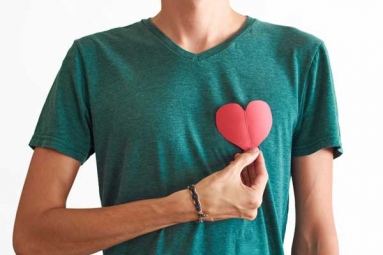
(Image source from: Canva.com)
In July 2023, rising American basketball star Brony James collapsed on the court during practice and was taken to the hospital. This 18-year-old athlete, the son of LeBron James, the famous veteran of the Los Angeles Lakers, had suffered a cardiac arrest. Many media outlets incorrectly referred to the event as a “heart attack” or used the terms interchangeably. Cardiac arrest and heart attack are separate but overlapping concepts related to the heart. Understanding the background of how the heart works can help you understand how different and related they are. The heart is a muscle that contracts and acts as a pump. When it contracts, it pushes oxygen- and nutrient-containing blood into all of the body's tissues. The heart muscle needs its blood supply from the coronary arteries in order to function effectively as a pump. When these vessels become blocked, the heart muscle does not receive the blood it needs. This can lead to damage or necrosis of the heart muscle, preventing the heart from pumping properly. In simple terms, a heart attack, also known as myocardial infarction, refers to the damage or death of the heart muscle.
Cardiac arrest, sometimes called sudden cardiac arrest, occurs when the heart stops beating, i.e. h. no longer function as an effective pump. In other words, in both cases the heart is not functioning properly, but for different reasons. As we will see later, one thing can lead to the other. Heart attacks are usually caused by blocked coronary arteries. It is sometimes called coronary artery disease, but in Australia it is more commonly known as ischemic heart disease. In about 75 percent of people, the cause is a process called arteriosclerosis. Here, fatty and fibrous tissue collects on the wall of the coronary arteries and forms plaques. Plaque can block blood vessels and, in some cases, cause blood clots. Atherosclerosis is a long-term and insidious process with many risk factors that can sneak up on anyone. High blood pressure, high cholesterol, diet, diabetes, stress and genetics all play a role in this plaque formation process.
Other causes of a heart attack include spasms of the coronary arteries, a blow to the chest, or anything else that affects blood flow to the heart muscle. Regardless of the cause, if blood flow through these tubes is blocked or reduced, the heart muscle may not receive enough oxygen and nutrients. Therefore, heart muscle cells can become damaged or die. However, cardiac arrest is the result of an abnormal heartbeat that makes it difficult for the heart to effectively pump blood throughout the body. These abnormal heartbeats are usually caused by a malfunction in the heart's electrical function. There are four different types:
Ventricular tachycardia: An abnormally rapid heart rate with a heart rate of more than 100 beats per minute (the normal resting heart rate for adults is usually 60 to 90 beats per minute). This rapid heartbeat prevents the heart from filling with blood and pumping properly.
Ventricular fibrillation: Instead of beating normally, the heart trembles or “fibrillates” like a bag of worms, resulting in an irregular heart rate of more than 300 beats per minute.
Pulseless electrical activity: Occurs when the heart muscle cannot generate enough pumping force after electrical stimulation and there is no pulse.
Cardiac Arrest: The classic flat heart rhythm often seen in movies indicates a lack of electrical activity in the heart.
Cardiac arrest can be caused by a variety of underlying conditions, both cardiac and non-cardiac, such as drowning, trauma, asphyxia, electric shock, and drug overdose. James' cardiac arrest was believed to have been caused by a congenital heart defect, a heart condition with which he was born. However, among the many causes of cardiac arrest, ischemic heart disease, such as a heart attack, is the most common cause, accounting for 70% of all cases. How can a heart attack cause cardiac arrest? This damaged or dead tissue can affect the heart's ability to transmit electrical signals and increase the risk of heart rhythm problems and, in some cases, cardiac arrest. Therefore, although a heart attack is a common cause of cardiac arrest, cardiac arrest generally does not lead to a heart attack. Because cardiac arrest causes the heart to suddenly stop pumping properly, the most common signs and symptoms include sudden loss of consciousness, no pulse or heartbeat, stopping breathing, and pale or bluish skin. However, the most common signs and symptoms of a heart attack include chest pain and discomfort, which can also occur in other parts of the body such as the arms, back, neck, jaw and stomach. Shortness of breath, nausea, dizziness, pale face and sweating also often occur.
Heart attack and cardiac arrest are both heart diseases, but their mechanisms and consequences are different. A heart attack is similar to a blockage in the pipes that supply water to your home. But a cardiac arrest is like a power outage in the house's electrical system. Despite their differences, both diseases can have serious consequences and require immediate medical attention.


















